Photographs: CERN
The elusive Higgs boson or the 'God particle' that may solve the fundamental questions about the formation of the universe has been found. Two independent teams of scientists announced on Wednesday the discovery of a new subatomic particle that has close resemblance to the 'God particle'.
Wondering what all that scientific jargon means? Confused about what the mystery of the God particle is all about? Here's a lowdown on what the scientists are seeking to do.
What is this Higgs boson after all?
Named after Edinburgh University physicist Peter Higgs, the Higgs boson or BEH Mechanism (some call it 'God Particle'), is a hypothetical massive scalar elementary particle predicted to exist by the standard model of particle physics.
It is the only standard model particle not yet observed. An experimental observation of it would help to explain how otherwise mass-less elementary particles cause matter to have mass. Higgs bosons are quantum fluctuations in the Englert-Brout-Higgs field that are visible experimentally only when energy is "injected" into the field.
According to the Englert-Brout-Higgs mechanism, the property that we measure as the 'mass' of a particle is the result of a constant interaction with a field that permeates the universe like a sort of ether (a class of organic compound).
Concentrating the right amount of energy in proton-proton collisions at the LHC excites the Englert-Brout-Higgs field, which resonates at a precise energy corresponding to the mass of the Higgs boson. The Higgs boson appears momentarily before decaying into other particles that the LHC experiments can measure. Some theories predict the existence of multiple Higgs bosons.
...
Dummies' guide to the 'God Particle'
Image: A graphic showing traces of collision of particles at the Compact Muon Solenoid (CMS) experience is pictured with a slow speed experience at Universe of Particles exhibition of CERNPhotographs: CERN
Why is it called the God particle?
The term was coined for American experimental physicist and Physics Nobel winner Leon Lederman's popular science book on particle physics: The God Particle: If the Universe Is the Answer, What Is the Question?
According to Higgs, it wasn't even Lederman's choice to call it the god particle: "He wanted to refer to it as that 'goddamn particle' and his editor wouldn't let him."
Why chase it?
Simply put, it answers the question: How does nature decide whether or not to assign mass to particles?
How did the idea of tracing the God particle originate?
The Higgs mechanism, which gives mass to vector bosons, was theorised in August 1964 by Franois Englert and Robert Brout ("boson scalaire"), in October of the same year by Peter Higgs, working from the ideas of Philip Anderson, and independently by G S Guralnik, C R Hagen, and T W B Kibble who worked out the results by the spring of 1963.
The three papers written by Guralnik, Hagen, Kibble, Higgs, Brout, and Englert were each recognised as milestone papers by Physical Review Letters 50th anniversary celebration.
Steven Weinberg and Abdus Salam were the first to apply the Higgs mechanism to the electroweak symmetry breaking. The electroweak theory predicts a neutral particle whose mass is not far from that of the W and Z bosons.
...
Dummies' guide to the 'God Particle'
Image: Prevailing model of the origin and expansion of spacetime and all that it containsWhat questions are being answered by this endeavour?
By exploring the world of infinitely small particles, physicists hope to provide answers to the origin and fate of our universe.
What happened just after the Big Bang? Why did matter dominate over anti-matter when, in laboratory settings, they are created in equal amounts?
What would you say if you found out we do not live in a four-dimensional world (three dimensions of space and one of time), but rather one containing extra hidden dimensions?
There are enough strange, puzzling questions and even stranger possible answers to blow your mind!
Does Higgs boson impact the current description we use for the universe?
The Higgs boson will complete our description of the visible matter in the universe, and of the fundamental processes governing the Big Bang since it was a trillionth of a second old.
The Higgs boson may have played a role in generating the matter in the universe, and may be linked to dark matter. It may even provide a clue how the universe inflated to its present size.
On the other hand, the Higgs boson is a very different particle from the others we know, and poses almost as many questions as it answers. For example, what determines the mass of the Higgs boson and the density of dark energy? According to conventional ideas, both should be much larger than their observed values. The quest continues.
...
Dummies' guide to the 'God Particle'
Image: LHC Particle Collider at CERNHow did they do it?
Built in a tunnel 100 metres (325 feet) below ground at the European Laboratory of Particle Physics (CERN) straddling the French-Swiss border, the Large Hadron Collider, the world's biggest atom-smasher, was designed to accelerate sub-atomic particles to nearly the speed of light and then smash them together replicating conditions which prevailed in split-seconds after the "Big Bang" that created the universe 13.7 billion years ago.
Conceptualised around a quarter century back, approved for construction in the mid-1990s and over a decade in the making, this technological marvel of a machine accelerated counter rotating beams of protons in two steel pipes 27 kilometres in circumference.
Engineers threw the switch to start up the LHC in September 2008 to global fanfare. All went well until it had to be shut down again 36 hours later. The incident -- which led to a helium leak into the tunnel housing the superconductor ring -- is thought to have been caused when a faulty electrical wire between two magnets was melted by the high current passing through it.
Repairs and a new safety system cost them a bomb. The LHC was restarted in November 2009 and became the most powerful particle accelerator in the world later that month.
In December 2010, LHC scientists revealed they had caught a first tantalising glimpse of the particle. Since the initial excitement the scientists sifted through vast quantities of data from innumerable high energy collisions in an effort to reduce the chances of being wrong.
...
Dummies' guide to the 'God Particle'
Image: A graphic showing traces of two high-energy photons measured at CERNPhotographs: CERN
How was the data from LHC analysed?
A theoretical model was used to predict what phenomena and particles might be seen, and experimental physicists estimated what their detector response would be to such events, using complex simulation methods.
They did this first so that they could predict the various expected types of events that will come out of the LHC. These simulated events looked just like the events collected in the detectors, except they are generated using all our knowledge of what can be produced when protons collide in the LHC.
Then the experimentalists determined a series of criteria for selecting new physics, partly defined using simulations. The selection criteria were designed for the sole purpose of spotting a needle in a field full of haystacks.
For this, physicists studied in detail the characteristics of possible interesting events (such as the Higgs boson), comparing these characteristics with those of known processes.
At this stage, the name of the game was to isolate the signal from all other types of events, which physicists referred to as background. Most of the time, the background constitutes the bulk of all collected events.
The final step was to compare the simulations of the known processes that survive the selection criteria to the collected data set. In some cases, comparison with simulations might not be necessary, and physicists may just need to subtract potential Higgs signals from the background directly inferred from the actual data.
...
Dummies' guide to the 'God Particle'
Image: The Large Hadron ColliderWhat next?
The data recorded so far in 2012 have not been completely analysed, and the LHC is still taking data.
Further analysis is needed and ongoing.
Despite the strong evidence for its existence, the properties of the Higgs boson need to be explored and understood.
As the particle is identified and studied more completely, the physics models will have to be updated.
But doesn't it mean that the July 4 revelation is not exactly a discovery?
The results presented on July 4 have been labelled preliminary. They are based on data collected in 2011 and 2012, with the 2012 data still under analysis. A more complete picture of Wednesday's observations will emerge later this year after the LHC provides the experiments with more data.
The next step will be to determine the precise nature of the particle and its significance for our understanding of the universe.
Are its properties as expected for the long-sought Higgs boson, the final missing ingredient in the Standard Model of particle physics? Or is it something more exotic?
The Standard Model describes the fundamental particles from which we, and every visible thing in the universe, are made, and the forces acting between them. All the matter that we can see, however, appears to be no more than about 4 percent of the total. A more exotic version of the Higgs particle could be a bridge to understanding the 96 percent of the universe that remains obscure.
Click on NEXT to go further...

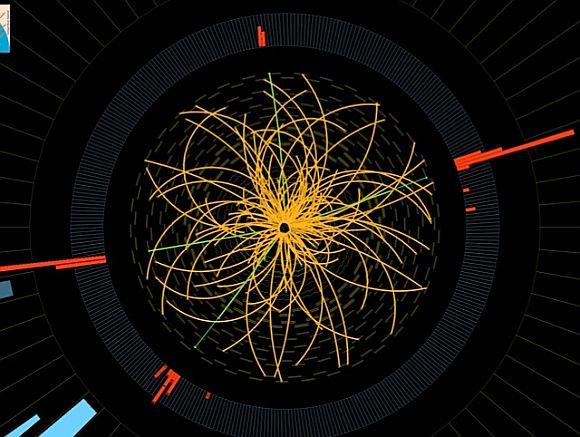
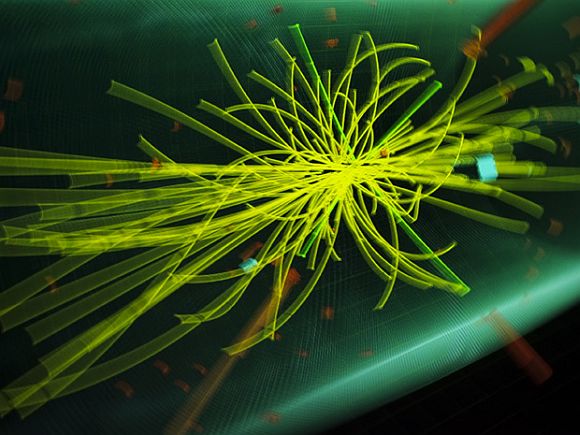
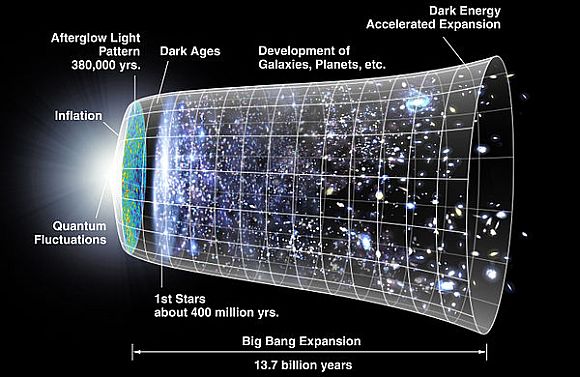
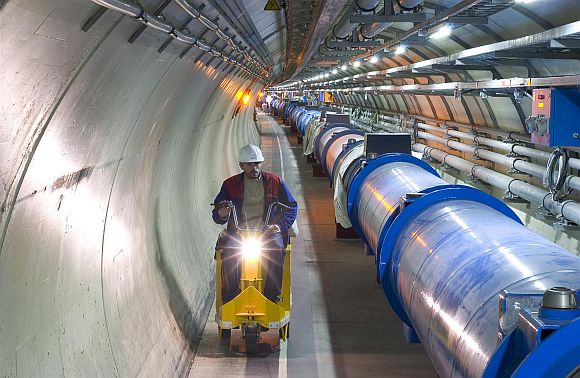
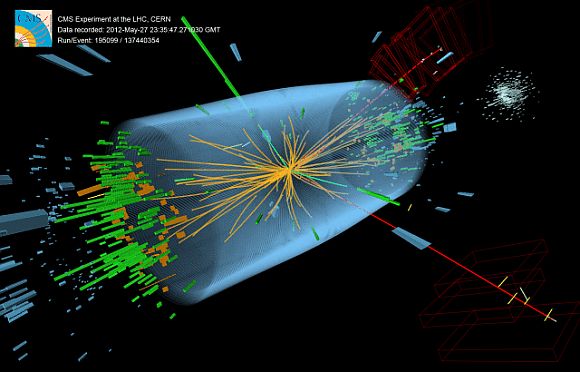
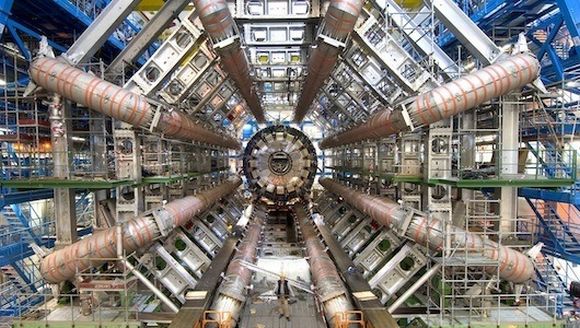
article